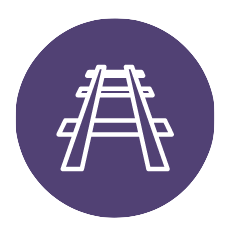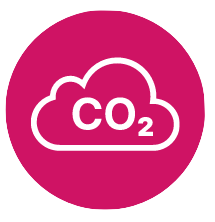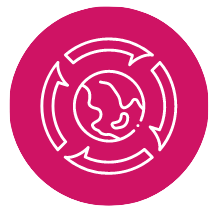The 17th edition will be the most sustainable ever.
Why a Green InfraTech?
InfraTech is the key platform for the entire infrastructure chain to engage in accessible meetings and open discussions. These interactions are essential for fostering collaborations that drive necessary changes in the sector.
One of the most urgent changes is sustainability. While sustainability is already a key topic in the infrastructure sector, it is also a major transition for the entire economy. The Netherlands is lagging behind on its Climate Agreement targets of 49 percent emission reduction by 2030, and the energy and raw materials markets are under significant strain. Infrastructure and construction projects are under pressure. InfraTech takes this seriously and aims to make a significant contribution to a circular infrastructure sector, emission reduction, and the energy transition.
If there is one sector that can and must provide solutions to the challenges of 2027, it is the infrastructure sector.
The four focus areas for InfraTech 2027

Social cohesion
Social cohesion by encouraging circularity and sustainable participation among exhibitors and visitors.

Circular exhibition with all suppliers
A circular exhibition with all suppliers through sustainability assessments, waste reduction, and CO2 footprint minimization.

Mobility
Mobility improvements by promoting eco-friendly transport options, working with local suppliers, and encouraging public transport and park and ride solutions.

A sustainable venue at Rotterdam Ahoy
A sustainable venue at Rotterdam Ahoy, featuring solar panels, sustainable heating and cooling, and responsible catering practices.
What are we doing ourselves?
InfraTech 2027, together with Rotterdam Ahoy, Rijkswaterstaat, and the City of Rotterdam, is fully committed to making this the most sustainable edition in the event’s 29-year history. Sustainable procurement and waste recycling are key priorities.
The roof of Rotterdam Ahoy is covered with solar panels, the climate control system is entirely gas-free, and the thermal grid, which connects Ahoy’s convention center and exhibition halls to the Hart van Zuid district, transforms the venue into an energy source, storage, and hub for a significant part of the city.
Rotterdam Ahoy also hosts key sustainability conferences such as Ruggedised and Recharge Earth, where European cities, businesses, policymakers, innovators, grid operators, and energy experts collaborate towards a sustainable and circular future.
The urgency
The Dutch economy, including the infrastructure sector, must be fully circular by 2050. Rijkswaterstaat has set an even higher goal, aiming for climate neutrality and circular operations by 2030. Provinces, municipalities, and water authorities are also implementing ambitious policies that will reshape both the appearance and the working methods of the infrastructure industry.
The urgency to innovate, scale up, and collaborate across the entire supply chain has never been greater. Now more than ever, public and private partners must work together to drive change.
Long-term goals and future vision
By InfraTech 2031, the event aims to achieve:
 |
| Generating as much sustainable energy as it consumes at the venue. |
 | Achieving carbon neutrality in all emissions related to the exhibition. | |
 | Creating a fully circular InfraTech ecosystem. |
Would you like to learn more about InfraTech’s sustainability goals and the initiatives of Rotterdam Ahoy? Get in touch.
 (229 x 258 px) (5).png)









.png)














